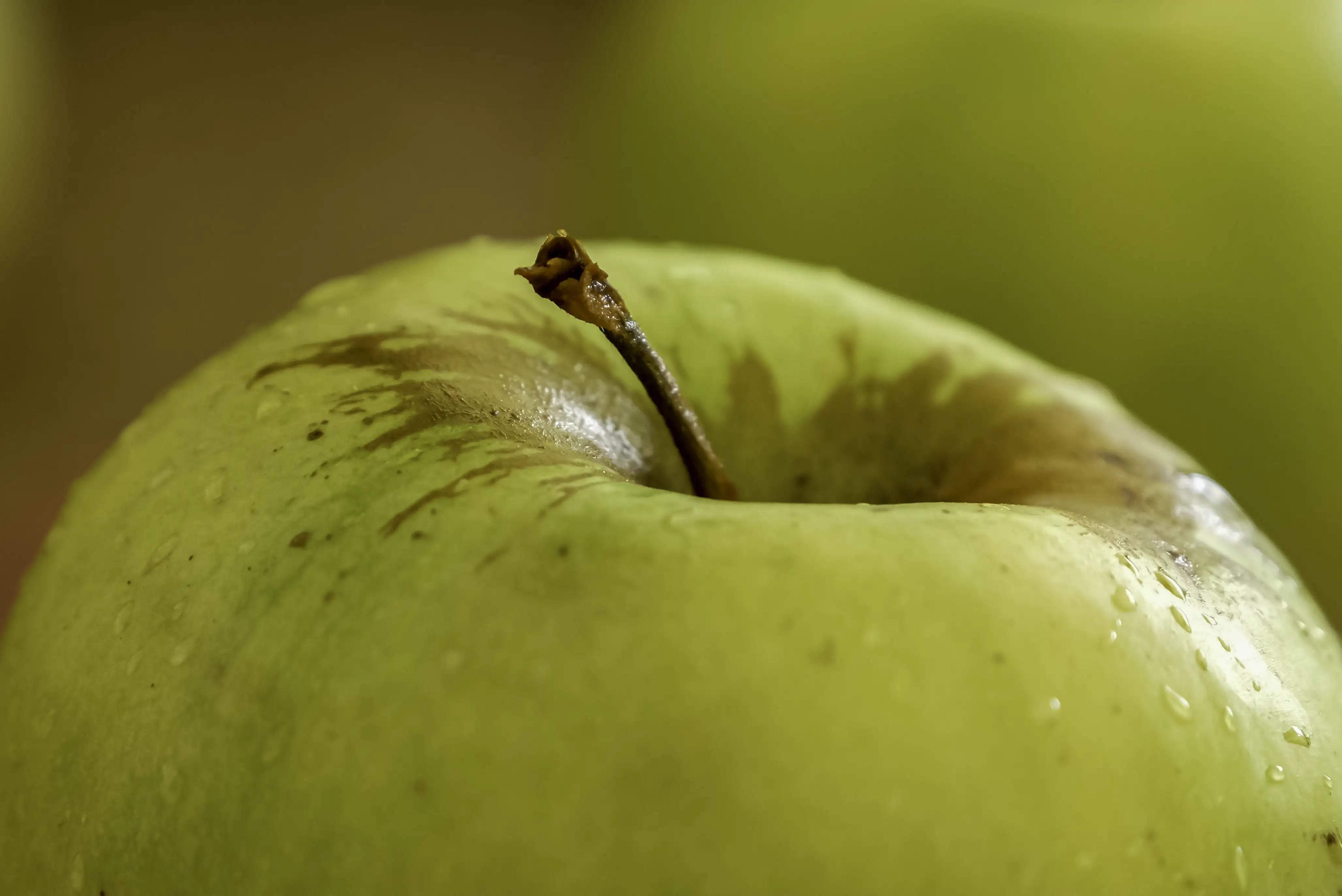
Understanding Pectin: A Masterclass
- Food Science
- Technique
Let's take a deep dive in the fascinating world of pectin and discover why it's so important, how to test for it, make our own and then use it.
Getting the perfect set on your preserves is the prize. Some think there's a mystery to it all, but at its heart some simple food chemistry demystifies the process and the perfect set will be yours.
Structural gel that holds plant cell walls together
What is it?
Pectin is a unique non-toxic soluble fibre found in fruit and vegetables. Contained in the plant walls and concentrated particularly in the skin and core, it’s comprised of many sugar molecules in long chains. In their natural state, a network is formed when the branches that stick out from the molecules bond together. This acts as the structural gel that holds the plant cell walls together. Technically, these long sugar chains are called polysaccharides. Pectin’s concentration varies to a greater or lesser amount in different produce. For instance, apples, quinces, gooseberries, and black currants have a higher content than peaches, strawberries, raspberries, cherries, and blueberries.
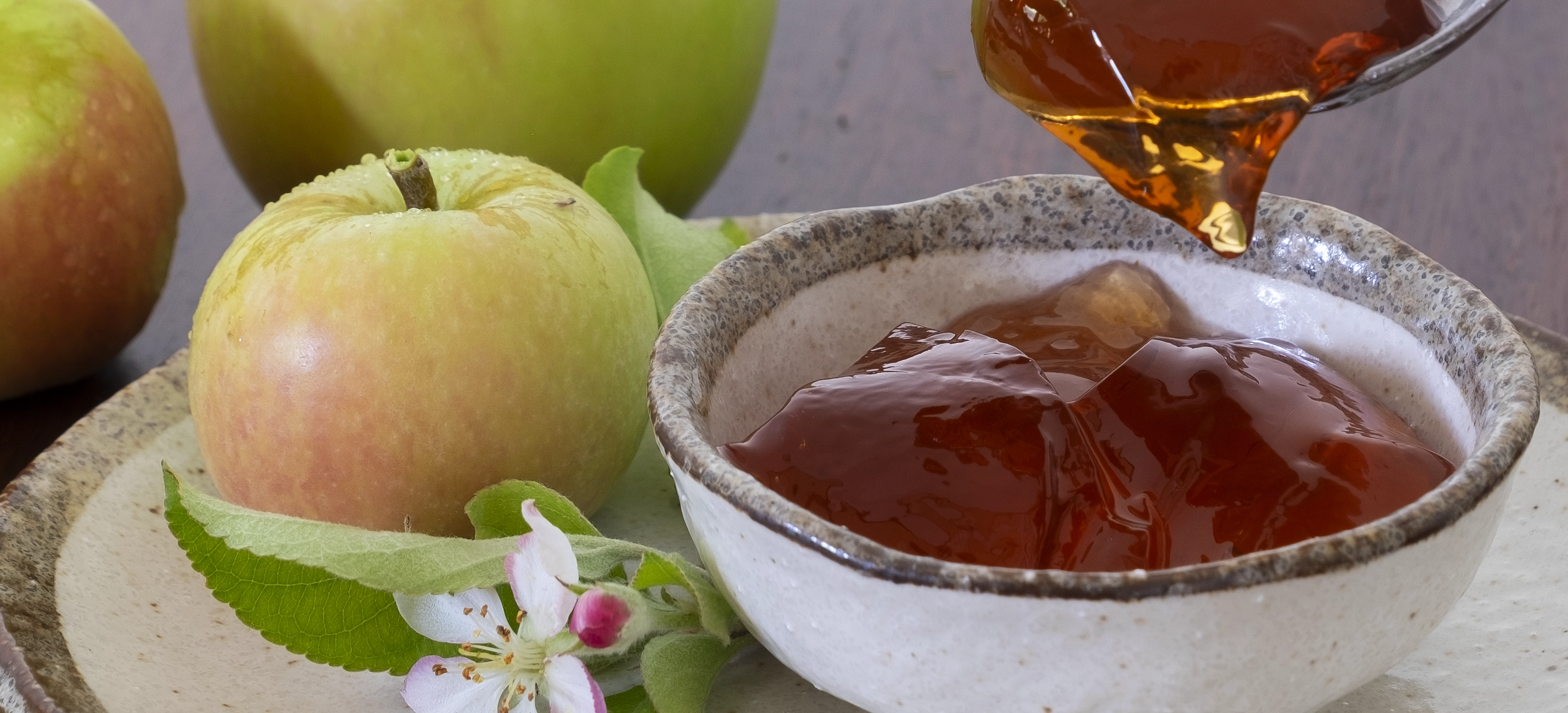 Pectin's gelling superpower: Apple & Rosehip Jelly
Pectin's gelling superpower: Apple & Rosehip Jelly
Regardless of its concentration level in the fruit varieties, fruit ripeness also affects the pectin content. Underripe fruit tends to have higher levels than overripe fruit. As fresh fruit continues to ripen, its pectin content progressively decreases as it turns into pectic acid – and that makes a difference. While very ripe fruit may have more flavour and colour, its pectin level is reduced. When making jam, to get a rich full flavoured set preserve, you can mix fully ripened medium to high pectin content fruit, to obtain the best flavour, with just-ripe fruit which has the highest gelling or setting ability.
Discovered 1825, named from the Greek word pektikos
Pectin was first isolated by the French chemist Henri Braconnot in 1825. It was named from the Greek word pektikos, which means congealed or curdled.
Why is it important
When making jam, jelly and marmalade, pectin’s gelling ability is essential in creating a perfect set. However, pectin alone is not sufficient. When fruit is cut and cooked, the water-soluble pectin leaches out of the cell walls and the cooking process changes its structure at a molecular level. In solution, pectin now attracts and bonds with the water molecules and it also has a slight negative charge. You may think, so what, but these seemingly unimportant changes mean the pectin molecule now bonds with the water and they repel each other instead of bonding. But when sugar and fruit acid are added, the gelling magic returns. The fruit acid reduces pectin’s negative charge and the sugar bonds to the water molecules, freeing up the pectin chains to reform and re-bond. The magic of food chemistry drives these two structural changes of our beloved gelled mass of deliciousness.
While fruits aren’t made with self-attached labels that specify their pectin and acid contents, helpful charts have been developed based on the work of enthusiastic researchers. My article, “What Makes Jam, Jellies and Marmalades Set”, contains a helpful chart.
 Apples, quinces, plums, gooseberries, red & black currants, grapefruit, lemons, limes, and oranges - high pectin level
Apples, quinces, plums, gooseberries, red & black currants, grapefruit, lemons, limes, and oranges - high pectin level
Balance the ratio of pectin, fruit acid & sugar
How Much Pectin and Acid?
Making a sweet preserve from a high-pectin, high-acid fruit is relatively easy. For those new to home preserving, I always suggest starting with plum jam or a citrus based marmalade – lemon, lime, grapefruit, or a combo of any of these with orange, the success will spur excitement and encouragement. To get that elusive set when using medium to low-pectin fruit with a low fruit acid content, additional pectin and fruit acid must be added.
Lemon juice is the most common form of natural fruit acid used. Use the recommended quantity specified in your chosen recipe. Don’t be overzealous with the acid. If too much is added, it will damage the pectin. Alternatively, if you are combining fruit to increase the overall pectin level of the preserve, try fruit options that also have a medium-high acid content. Remember the fruit pectin and acid chart will be your trusted friend,
Pectin can be added in three ways: (1) as a commercial powder, or with a branded product that combines sugar and pectin, such as Jam Setta or an equivalent, or as liquid pectin, (2) by combining high or medium-pectin and low-pectin fruits, or (3) by using your own homemade pectin.
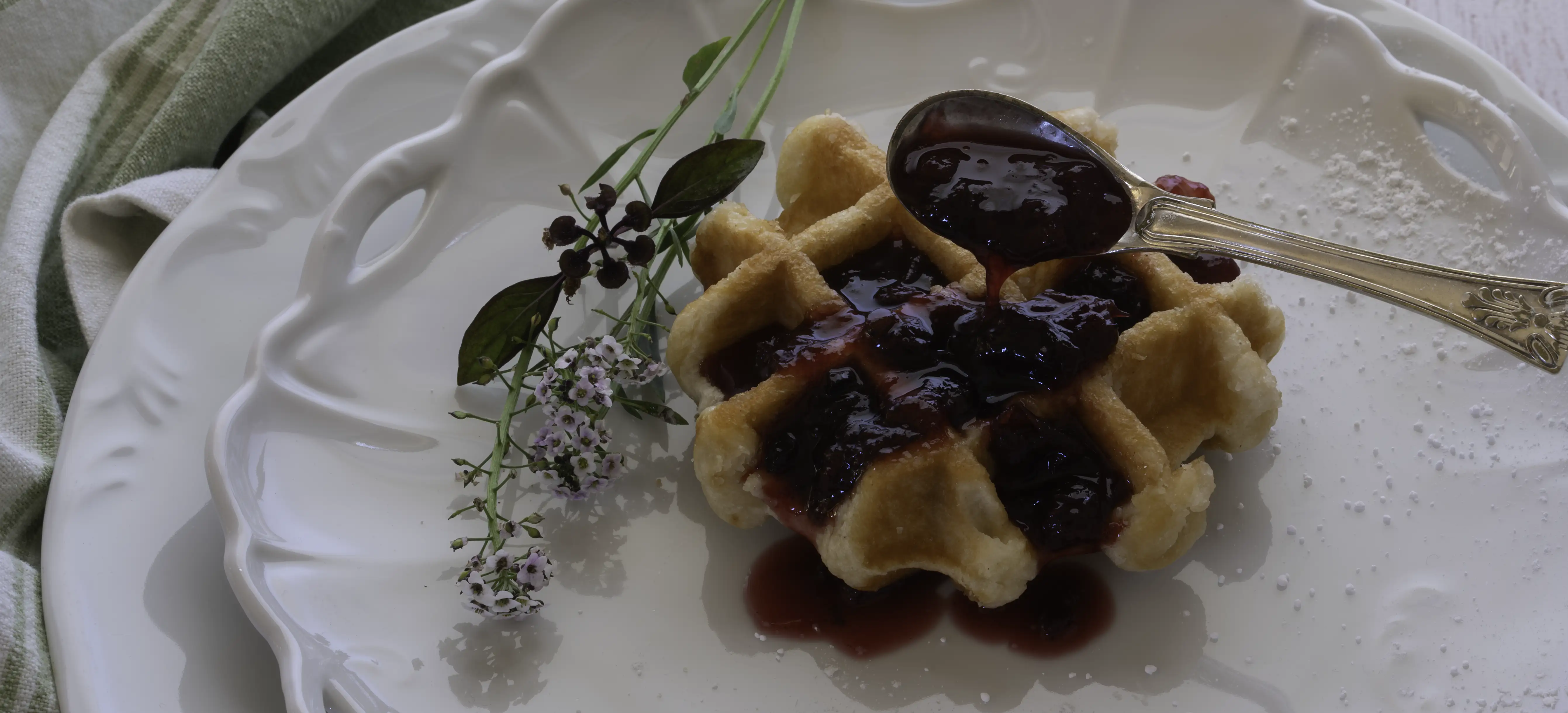
Combine fruits high and low in pectin and acid for a perfect set: Plum & Elderberry Jam
Use a pectin & acid chart, test your pectin level
Testing the Pectin Level in your Mixture
Testing for pectin, after the fruit has simmered, but before adding the sugar, is a straightforward process and easily incorporated into a preserve making session. It determines if and/or how much pectin you need to add to ensure it sets. If there is insufficient pectin, the inclusion of additional pectin will adjust the level before the final boiling stage. The fruit must be cooked as this releases the pectin. This test will not produce accurate results if raw fruit juice is used.
Requirements: Small glass jar or equivalent, measuring spoons: teaspoon and tablespoon, Methylated Spirits, simmered fruit mixture before the sugar has been added.
Place 5ml (1 teaspoon) of the simmered fruit solution, taken from the mixture, into a small glass jar. Add 15ml (1 tablespoon) methylated spirits to the jar and leave it for 1 -2 minutes. A mixture high in pectin will form a large, clotted mass, a medium pectin level will produce two or three smaller clots while a low pectin level will produce small, scattered lumps. If it forms several blobs, then continue to simmer for approximately another 5 minutes to get a more concentrated juice base. Repeat the test. If it still doesn’t form a single soft lump, the jam will need additional pectin.
Always discard the clotted mass after the test and thoroughly wash your equipment as methylated spirits is poisonous.
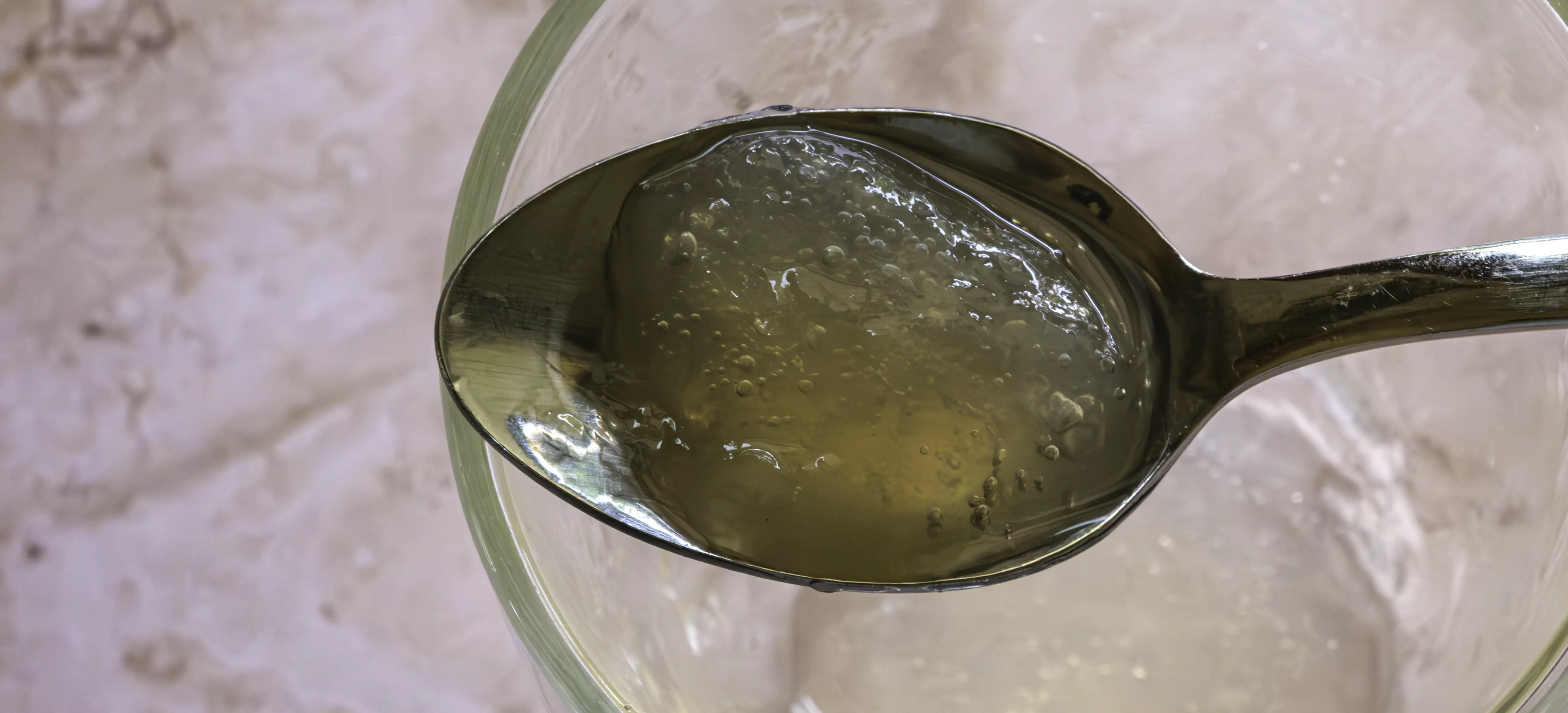 A large clotted mass means your fruit is high in pectin
A large clotted mass means your fruit is high in pectinUnleash apples superpower to make your own pectin
How To Make Your Own Pectin
Apples have a high pectin content, and their natural flavour, aroma and colour is perfect for making pectin as it doesn’t mask the other fruits natural qualities. Quince can be substituted, if apples are not available, as they also have a neutral profile. My article Pectin: Extracting Apples Superpowers, explains how to make your own pectin. During autumn, when apples and quinces are abundant, you can make enough for a year of preserve making. The same method can be used to extract pectin from other high-pectin fruit such as, red currants, black currents, or lemons. However, these should only be used where their flavour and colour characteristics are intended to be an essential part of the preserve.
How to Use It
One of the other benefits of adding pectin is the setting point is reached more quickly, and the reduced boiling time helps to preserve a fresher fruit flavour. Keep in mind though not to add too much pectin as this can give your preserves a dull and uninteresting flavour.
- Homemade Pectin
- Add 150ml (1/4 pint) homemade pectin to each 500g (1 lb) of fruit used. Stir in, add the amount of sugar as specified in your chosen recipe and simmer until the jam has reached the setting point.
- Commercial Pectin
- The pectin content may vary in different commercial brands. Usually 100g (3oz) to each 500g (1lb) fruit used will be sufficient. However, please follow their instructions on the packet.
Some recipes recommend boiling the preserve to 104-105C, suggesting the sugar content is high enough for the pectin to gel sufficiently to suspend the pieces of fruit in the mixture. Unfortunately, temperature alone is not a reliable method. It can be used as a handy additional indicator; however, the setting point is only achieved when there is the correct ratio between fruit pectin, fruit acid and sugar and then they are boiled long enough together.
The flake test and the wrinkle test are the two most reliable methods to determine if the preserve will have the perfect set. My article: What Makes Jams, Jellies and Marmalades Set, provides additional information on how to conduct these quick tests in the final boiling stage of making sweet preserves.
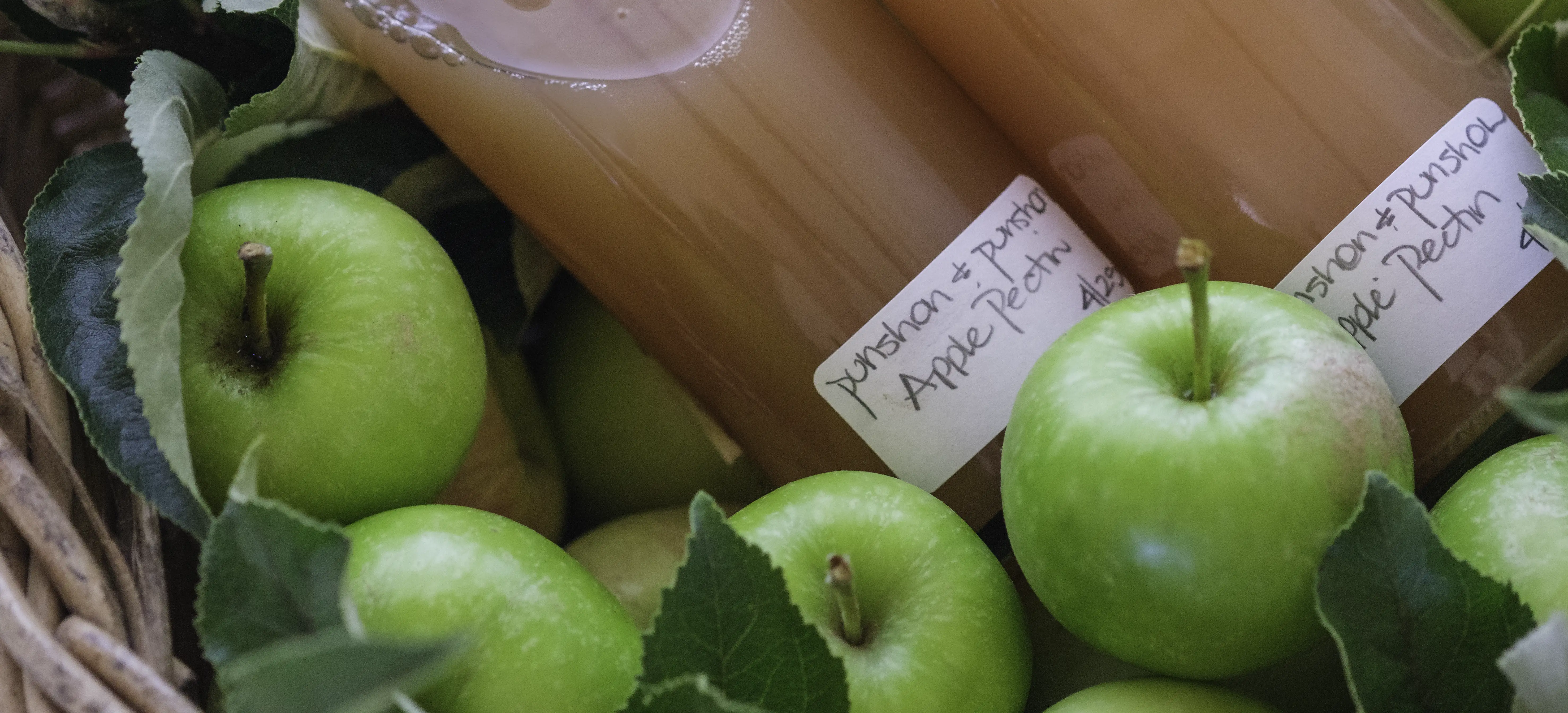 Bottled liquid pectin ready for use
Bottled liquid pectin ready for useGetting the elusive perfect set
My top tips for getting the perfect set on your sweet preserves every time are:
- use the fruit and acid pectin chart to determine the likely pectin and fruit acid content of your chosen fruit. Noting, however, that pectin levels can change with seasonal variations.
- do not use overripe fruit unless it is balanced with some underripe fruit
- use freshly picked seasonal fruit, not those from long-term cold storage. Pectin progressively deteriorates the longer the fruit has been picked. Freezing also lowers the level.
- use the pectin test after the fruit has simmered and before the sugar is added
- add extra pectin if necessary
- fruit acid assists the gelling process so ensure high acid fruits are used, or lemon juice (citric acid) is added as part of the recipe
- boil the preserve until it reaches its setting point, normally 15 mins. If it hasn’t set, add more pectin/acid and re-boil
If for some reason your preserve doesn’t set, don’t be disheartened and don’t throw it away. Use it to flavour up ice-cream, stir into yoghurt, as a sauce to accompany a favourite dessert, or pour over hot pancakes or waffles. And then, of course you will discover some of your favourite ways of eating your delicious, sweet preserves.
